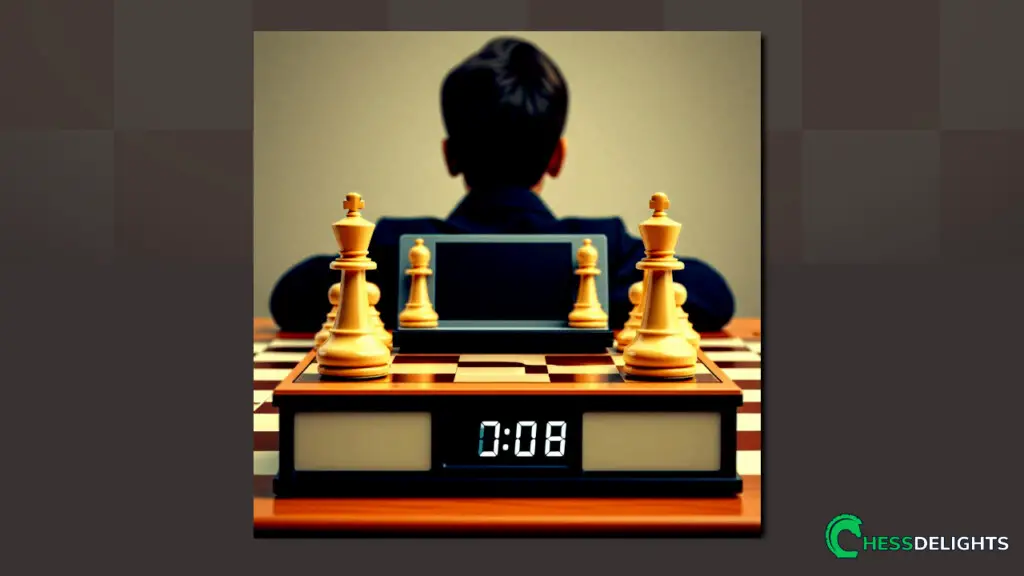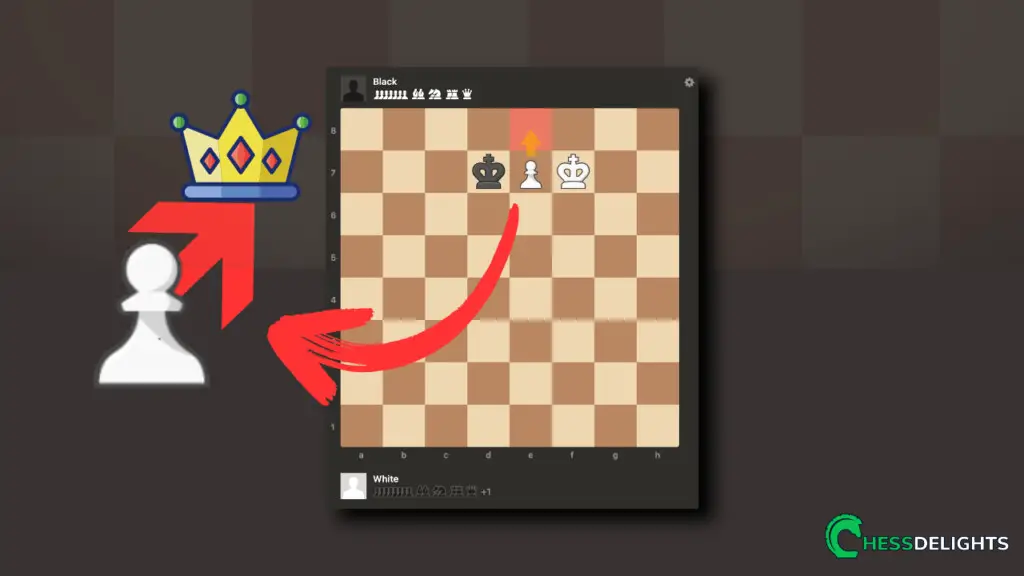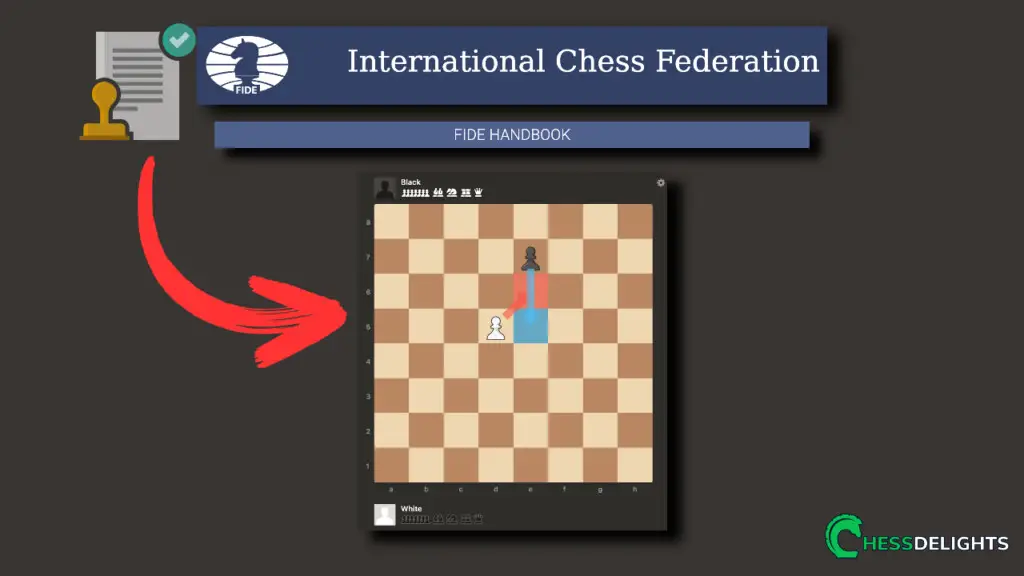Castling is a special chess move that involves the King and one of the Rooks. It allows the player to move the King two squares towards the Rook, and then move that Rook to the square immediately next to the King on the opposite side.
This move serves multiple purposes: it helps to safeguard the King by moving it to a less central position and connects the Rooks for better coordination.
However, castling can only be performed under specific conditions: neither piece may have moved prior in the game, there must be no pieces between them, and the King cannot be in check, move through check, or end up in check after the move.
Table of Contents
Castling under check, is it allowed?
Castling is not allowed when your king is under check. If your king is in a position where it is being attacked, the rules of chess require you to protect it or move it to safety. While castling is a special move that can help get your king to a safer position, it cannot be executed if the king is currently in check.
Allowing castling in such a situation would create an imbalance in the game, as it would enable a player to escape from an immediate threat without addressing the check. Therefore, players must find other legal moves to ensure their king's safety when it is under attack.
Recommended Reading: If you want to learn more about another special move called en passant, read this guide.
Castling: A powerful chess move
Why there should be a balance in using powerful moves like castling? Because castling under check – if it was allowed will be extremely powerful.
Chess is a game of strategy; the balance is having to play with some powerful privileges while learning how to implement your strategies.
For example, if you were to use castling at a later time just so you can avoid a direct check or checkmate – then this defeats the purpose of having a balance in the game.
Agree? I always tell my daughter that it's best to implement strategies and don't rely on any special moves to win a game. I really do hope she understands me because she goes straight to playing Wii after…lol! Castling is a powerful chess move, and using this with the right strategy will help improve your game.
Strategy on Castling While Under Castling?
Here are some basic strategy on how you can castle while being under check by a Queen, Rook or Bishop
If you are about to castle and your king is under check by either the opponents Queen, Rook or Bishop – you first need to stop or avoid the check…
By placing a chess piece between your King and the opponent's attacking chess piece in this case it could be an opponents Queen, Rook or a Bishop.
And then you can do the castling later…
For as long as both the King and the Rook has not moved from their original positions. To be honest when I was about to write the answer I was supposed to say to just block any attacking piece of your opponent – but I forgot that you could not simply block a check from a knight or a horse…lol!
So, that's one way, and there are two other possible ways to get out check then do the castling.
Two other ways to get out of check
What I mean about the check is – it's a single check…And you still have legal squares to move your king or chess pieces besides a lone king.
1. The first one is by being able to capture the attacking piece by the King itself or another chess piece. With the exception that you'll not leave your King under check again by another opponent's chess piece.
2. Second is by moving your King to a square which is not under attack or controlled by your opponent's chess pieces.
I know it's pretty obvious – but for someone who has not played chess before (like chess beginners of course) this is the basic moves. And those are the moves that I'm teaching my daughter and some of the rules you need to keep in mind when you are trying to get out of check.
Is it better to castle kingside or queenside?
Experts say that castling kingside or queenside has both advantage and disadvantage depending on the actual game and positions. I did a little research regarding this and here are some excellent reasons that can help you decide which one is better:
- Kingside castling develops faster because there are only a few chess pieces that need to move out to castle.
- Kingside is a lot safer with all the king pawns on the starting square. Unlike castling on the queenside – the move will often leave your rook pawn vulnerable for an attack.
- Now, with Queenside castling the advantage has your rook immediately on the center.
- Queenside castling can help you develop an attack positioning as your King pawn can be maneuvered to join an attack.
OK, some of the experts almost always advise castling on your Kingside and they find Queenside castling a big mistake. Well, if you're not so sure about which side to castle early on your game – it will be better to castle on the Kingside whenever possible.
How to read and write castling in chess?
Chess notation is too early for kids to learn or if you are just a beginner. But it's not that hard to learn especially when you can explain to your kids the numbers and letters on the chess board.
There are two ways to write castling chess, here is the first one is 0-0 and the second looks like this 0-0-0. The 0-0 indicates castling on your Kingside and 0-0-0 is castling on your Queenside.
The difference is related to the Kingside castling and Queenside castling, it also the same terms as short castling or long castling respectively.
Is it possible to castle with a rook that is attacked?
I hope you are really getting the idea or understand that your King cannot castle or pass through a square that is being attacked.
But does this apply the same way with your rook for castling? The answer is No; you still can castle even if the rook is attacked. It does not matter if your rook for castling is attacked as long as your King can safely do the castling without being checked or going through an attacked square.
You can read the summary below, but first I found some really interesting questions, and let me try to give you an answer…ok? 🙂
Can you castle using your queen?
Here's a fun question to answer. And I may have a logical answer. 🙂 For a beginner, this question might pop up…( I'm not sure about that) And if you're already teaching your kids chess – you already know the answer.
Can your queen do castling? No, the queen does not perform or participate in any castling moves. And the logic behind this is that castling is a way to protect your chess piece like your King which very much vulnerable – unlike the Queen, it's a very powerful chess piece that does not need any castling move for protection.
Just for fun, go ahead and take out your Queen and Rook and see how Queen castling would look like. Doesn't feel right eh… 🙂 Anyway, it will never happen in a real chess game so don't think about this. That move will never be allowed ever… 😉
Can either my King or Rook capture an opponent's piece while castling?
I never thought of this, but I'm quite sure I encountered this when I was playing with my friends back in the day…lol!
When you are about to castle, and an opponent's chess piece is exactly where my King's castling square or even my Rook – can you capture that chess piece? The answer is – not possible. Remember as long as there are chess pieces between your King and Rook you cannot perform a castling move.
Wrapping Up
When it comes to chess – especially in the early games your King's safety is the number one priority. It's always good advice to castle early.
When you are already planning an attack, you will eventually need to move up your pawns to create openings and having your King in the safer area already – this will prevent surprising attacks or openings that can lead to checkmate.
Recommended reading: If you want to know the best books to learn positional chess plays, read this article.







